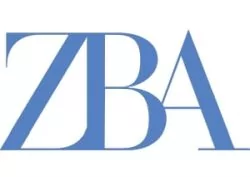- with readers working within the Law Firm industries
Introduction
The increasingly large haircuts that creditors are taking under the Insolvency and Bankruptcy Code, 2016 (Code) has alarmed stakeholders and government alike. Answering a query raised by the Parliamentary Standing Committee on Finance1 on low recovery rates with haircuts as high as 90-95%, the government simply shifted the onus to the committee of creditors (CoC) exalting their status as the predominant player in the entire process. There is an elephant in the room that needs to be addressed. However, is regulating the CoC a solution to the problem? This article analyses the practical challenges in implementing the proposed code of conduct for the CoC (Code of Conduct).
Need for Code of Conduct
The IBBI discussion paper paints a gloomy picture of the role being played by the financial creditors in the insolvency process. The IBBI categorically notes that numerous questions have been raised on the decisions of the CoC, many times detrimental to the objectives of the Code. This prompted the IBBI to frame an appropriate mechanism to guide the CoC in its functioning. The Supreme Court has repeatedly supported the role of financial creditors in the insolvency process on account of their expertise and understanding of the credit process. IBBI's sudden doubt on the functioning of the CoC is therefore surprising and puts in to question the entire framework of the Code.
Code of Conduct- Floodgate of Litigation?
The proposed draft of the Code of Conduct leaves ample scope for varied interpretation and will consequently result in a spate of litigation. A few such instances are: (a) maintain integrity; (b) maintain objectivity in decision making; (c) ensure that the decisions are without any fear, bias, favour or coercion; (d) maintain transparency; (e) ensure timelines under the Code are not breached; (f) ensure reasonable insolvency process cost; (g) bear the collective interest of all stakeholders in all decisions; (h) endeavor to protect the corporate debtor as a running business. Each of these factors is subjective and vulnerable to challenge on one ground or another. More significantly, this will discourage the CoC to take any bold decision for fear of scrutiny by courts or the regulator.
Challenges
The measures taken by the IBBI are well-intentioned. But begs the practical consequences of these steps. Adding an additional layer of complexity is unwarranted given that litigation is now the norm in the insolvency process and delays and breach of timelines the rule rather than the exception. A few instances are:
- Increased challenges by operational creditors and unsuccessful resolution applicants: Successful resolution plans are often challenged by operational creditors. The Supreme Court's decisions on the commercial wisdom of the CoC being paramount and not amenable to judicial review have saved the day till now. However, it will be interesting to see whether the commercial wisdom of the CoC can now be questioned for not adhering to the Code of Conduct. In any case, implementation of the code of conduct will lead to another round of litigation, before the Supreme Court finally settles the issue.
- Excessive Regulation: The IBBI regulates insolvency professionals, valuers and information utilities under the Code. No doubt, this is crucial to ensure smooth functioning of the insolvency process. However, banks and financial institutions are already heavily regulated entities and answerable to the RBI. While acting as a member of the CoC, they continue to be regulated entities and bound by RBI guidelines. Adding an additional layer of regulation is not only excessive but can also result in a turf war between competing regulators.
- Discourage Talented Bankers: Public sector banks in India have to be mindful of several factors while taking a decision or else they may face scrutiny. The proposed Code of Conduct adds another layer of scrutiny. This may deter public sector bank officers from taking bold decisions, which will be detrimental to the entire credit culture and insolvency process.
Conclusion
The insolvency process under the Code clearly needs improvement and the issue of lenders taking high haircuts must be addressed. However, the government should also focus on fine tuning other aspects of the process including vastly improving NCLT infrastructure, encouraging investors to participate in the process, allowing bona fide promoters to play a role in the resolution. Banks and financial institutions should be allowed to mature as a member of the CoC, which requires time and patience. Expecting a quick fix, is utopian and may result in the remedy being worse than the disease.
Footnote
1. 32nd Report of the Standing Committee on Finance
The above is a generic analysis and should not be regarded as a substitute for specific advice based on the facts of a client's objectives and specific commercial agreements reached. Please do reach out to us at mail@zba.co.in for any queries.



